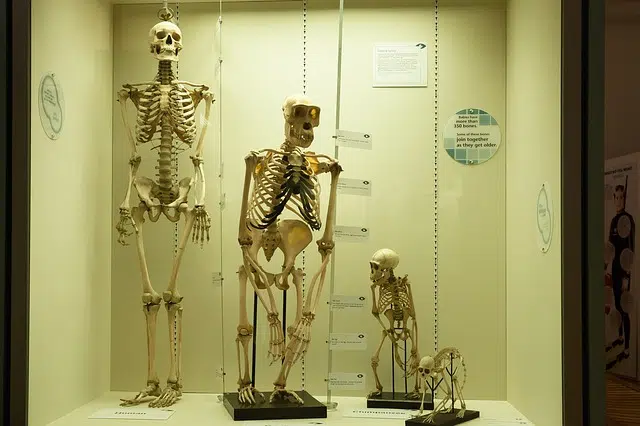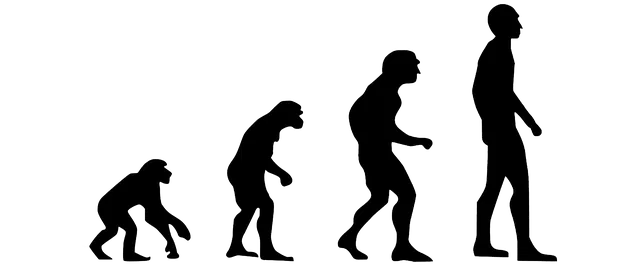
The idea of hominization alludes to the evolutionary process of our species.
The concept of hominization refers to the various stages that make up the evolutionary development of our species. This process involves various changes in the genus Homo from its first exponents to the current human being . Each phase of it is characterized by the acquisition of a certain condition in the species, which would differentiate it from the rest of living beings, including primates.
Hominization studies, which include notions of anthropology , genetics , archaeology , paleontology and other sciences, also date back to other genera , such as Australopithecus and Ardipithecus .
The evolutionary line
Scientists believe that the lines of evolution of people and chimpanzees diverged between five and seven million years ago. This separation did not stop since the human species continued to derive into new branches and other species, of which the only one that survives today is the aforementioned Homo sapiens .
There is a consensus that members of the genus Homo are those species of hominids that have the ability to create tools with rocks. In recent years, however, a current maintains that Australopithecus ghari also developed simple tools.
The oldest fossils that have been found of Homo sapiens are close to two hundred thousand years old. These fossils were found in Ethiopian territory , on the African continent, in a region that is often called the cradle of humanity.
Stages of the hominization process
The particular conditions that differentiate humans from primates are their upright position, their bipedalism (primates walk on four legs), a larger brain and smaller jaws and teeth , and the ability to express ideas and feelings through sounds or body expressions . These characteristics were gradually acquired through natural selection, that is, those who knew how to adapt to the changes were the ones who did not perish.
It is known that the first hominids existed in Africa and from that point on they conquered the rest of the world. At first they were vegetarians, but soon included meat in their diet due to the scarcity of plant foods; It is believed that the inclusion of this element in the diet allowed the enlargement of their brain.
Human beings share a trunk with chimpanzees, however their DNA is 1% different. As various studies have revealed, the separation of both species occurred around 5 million years ago; It was then that the first hominids appeared, which had the characteristics that would definitively define our species: upright posture and bipedalism .

Hominization is associated with the evolution of the human being.
Types of hominids
This was just the origin of an evolution that would take millions of years, until what we are today. Throughout their different evolutionary phases, hominids received various names, among the main ones are:
* Ardipithecus Ramidus: They lived in Ethiopia, were bipeds and ate vegetables. They were not very aggressive and had small brains and jaws.
* Australopithecus: They resided in Africa. They had a small brain, were bipedal and small in size. They fed on vegetables and did not make tools;
* Homo Habilis : It is the first representative of the HOMO classification and was found in Southern Africa. They were the first omnivores. They had a larger brain than their ancestors and were the first to make tools using stones; It is believed that they also communicated through a rudimentary language.
* Homo Erectus : They lived almost 2 million years ago in East Asia. They had an omnivorous diet, they made tools, a little more sophisticated than their ancestors, and they learned to use fire to warm themselves and illuminate themselves. It was one of the species that best adapted to its environment and became extinct approximately 100,000 years ago.
* Homo Sapiens Neanderthalensis: They lived in Neanderthal and other regions of Europe 200,000 years ago. They were larger than current humans and had an upper cranial cavity. They had a high technological level that allowed them to make sophisticated tools, performed rituals, cured diseases and made ornaments. They also had a language to communicate with each other.
* Homo Sapiens Sapiens : The oldest remains were found in Ethiopia and are estimated to be about 160,000 years ago. They were the hominids that best knew how to diversify, dispersing throughout Africa, Europe, Asia and even America and Oceania and supplanting other hominids.
Hominization does not stop
That is all that is known so far, however as the years go by and new fossils are discovered, the panorama changes and certain theories that seemed totally true regarding the hominization process must be reconsidered again .
To conclude, we can affirm that the closest living relatives of humans are the chimpanzee , the gorilla , the orangutan and the bonobo . The Homo sapiens genome shows that our species shares about 99% with the bonobo and the chimpanzee, for example.
The human species, however, has not stopped evolving . Global mobility and increased life expectancy are, for some experts, symptoms of this continuous evolution.
